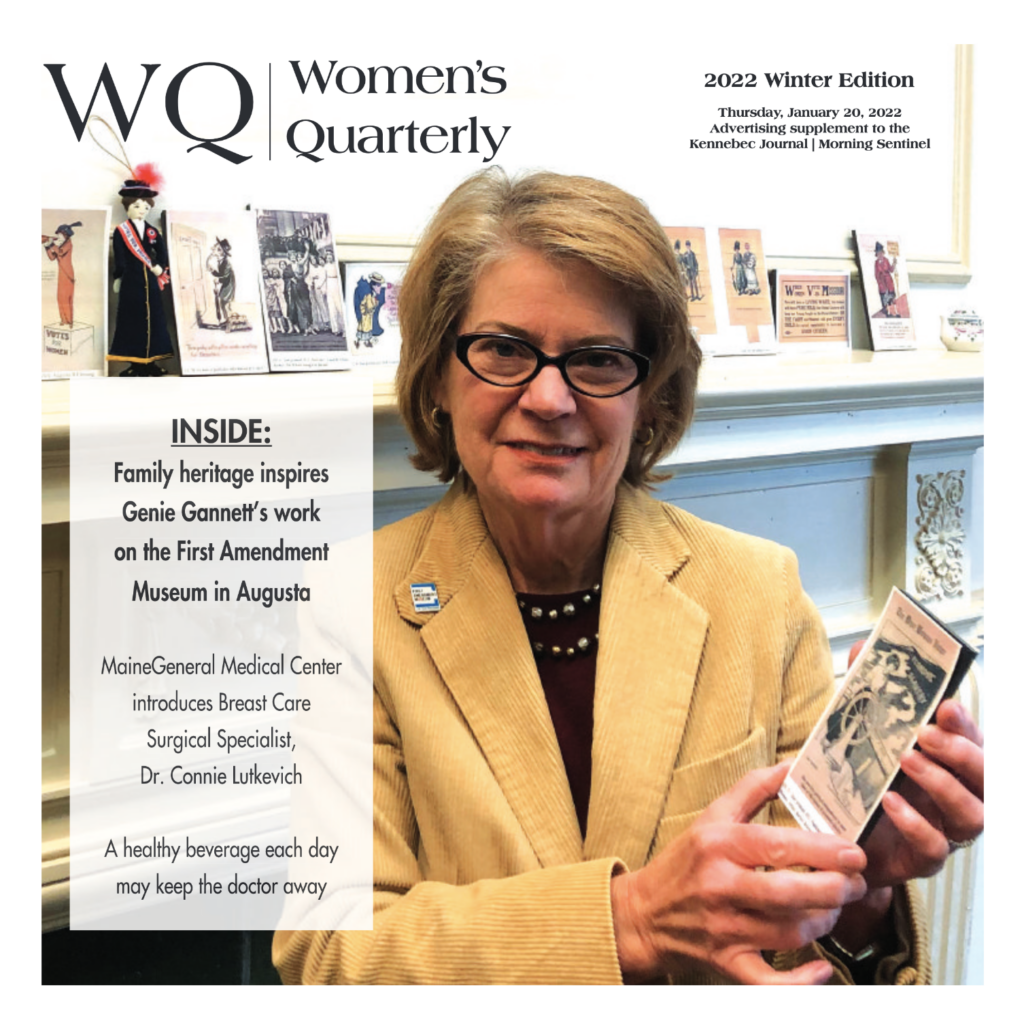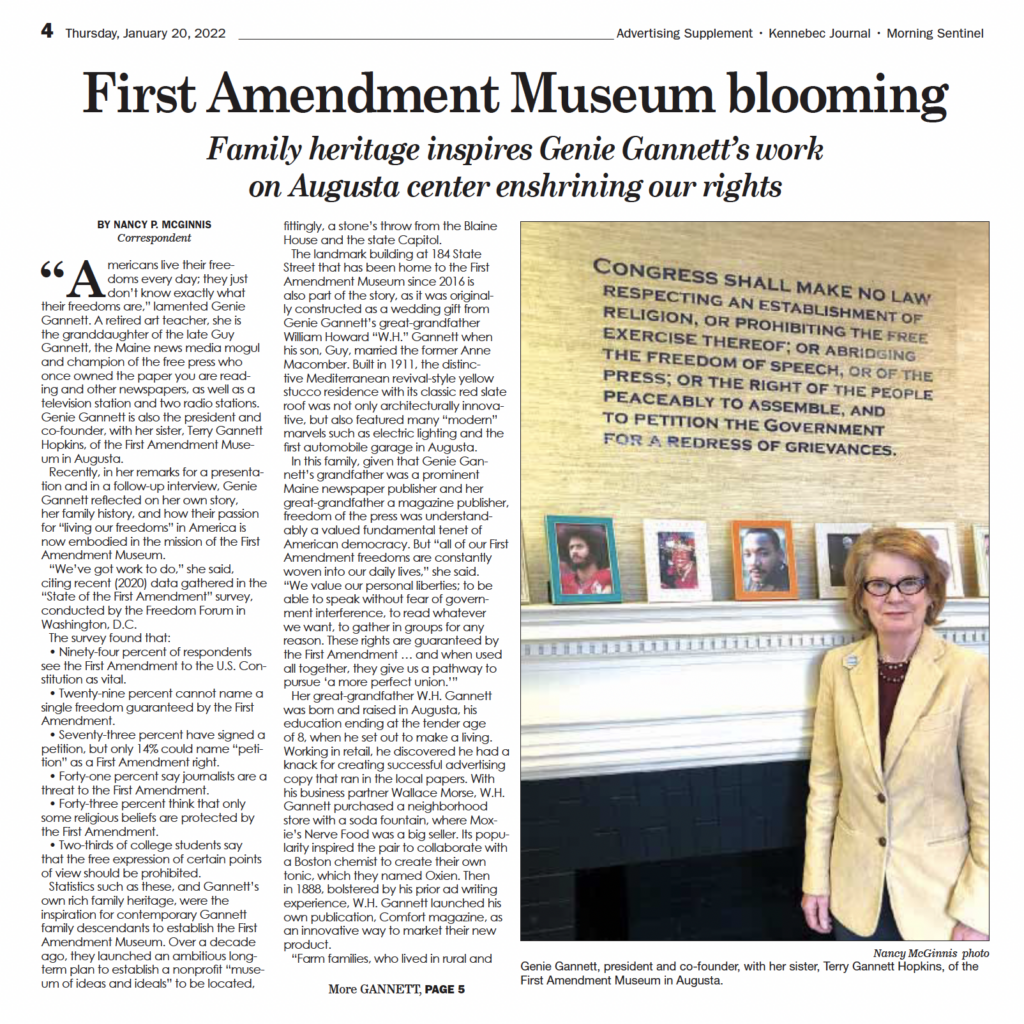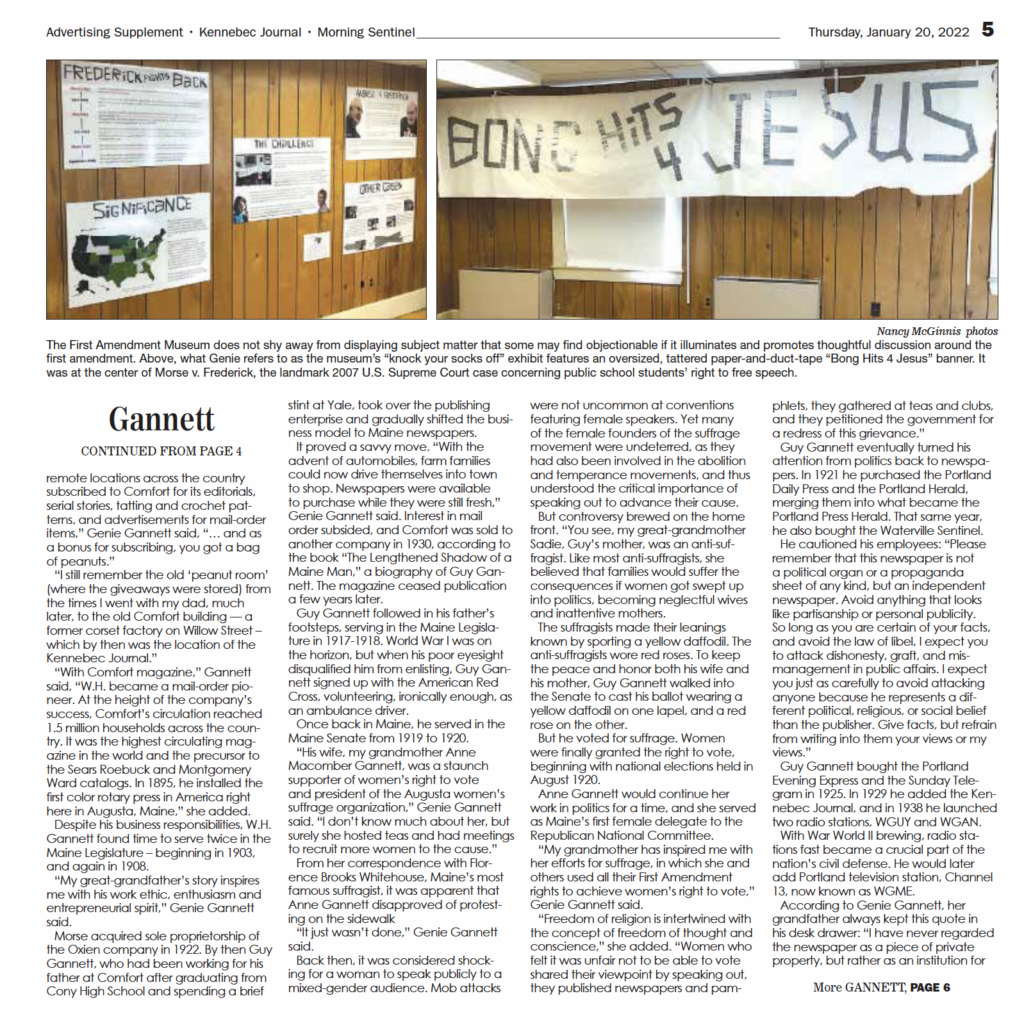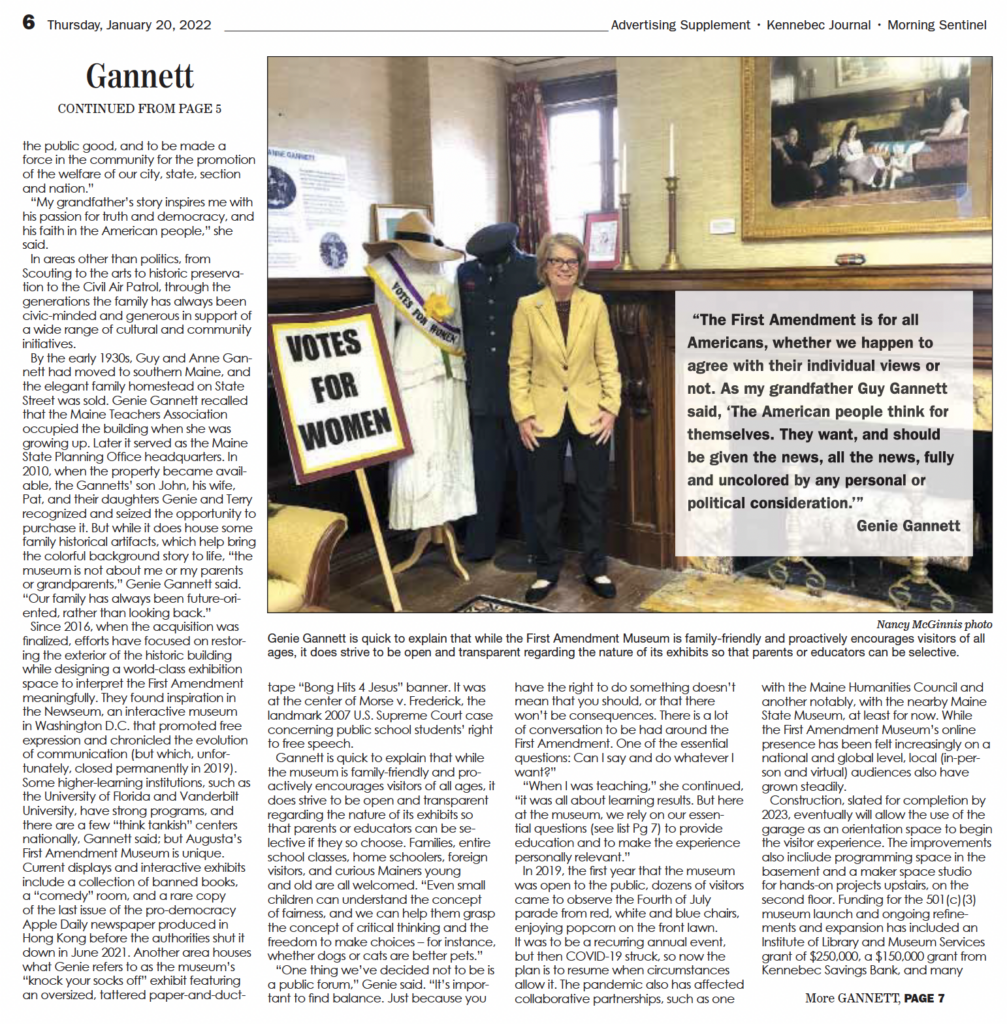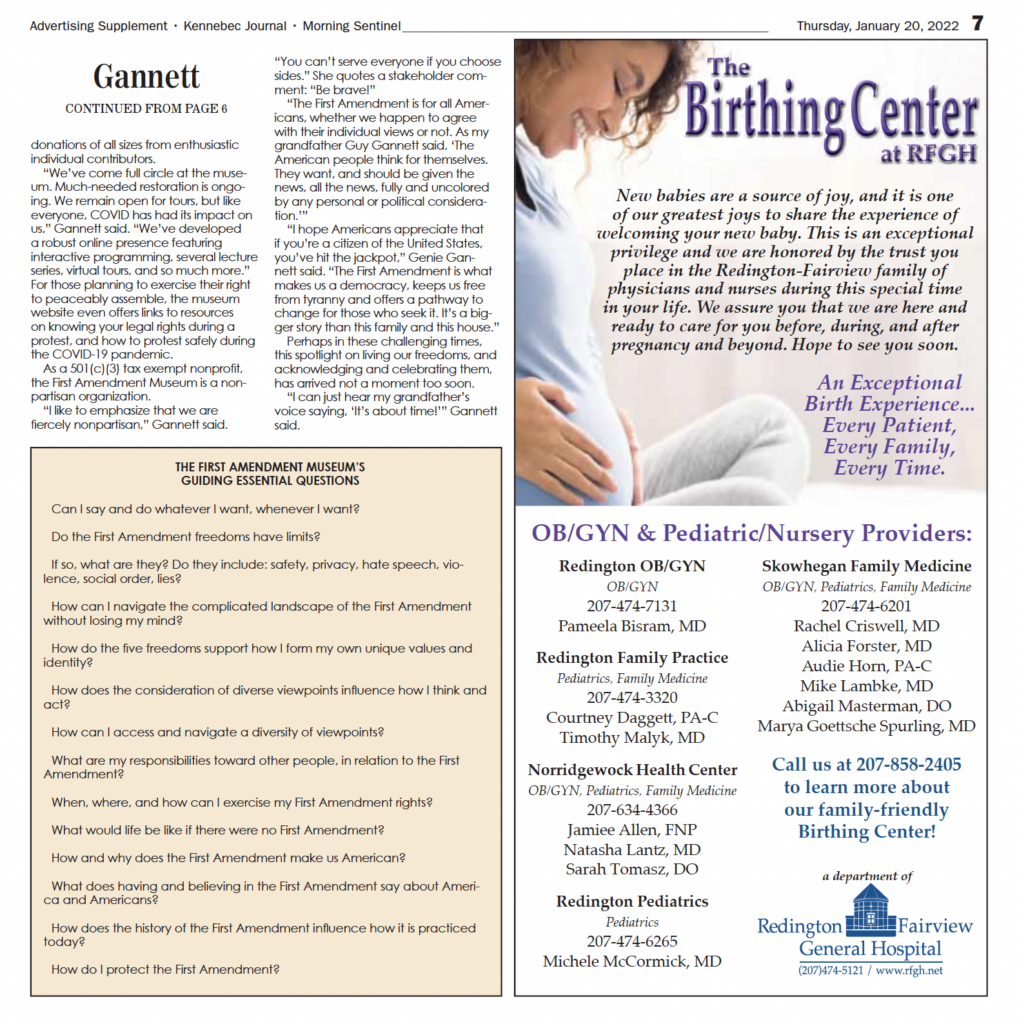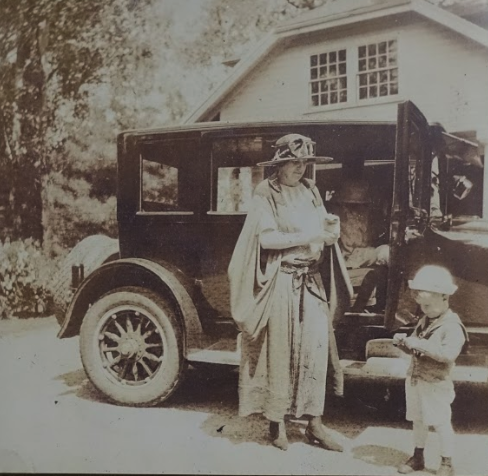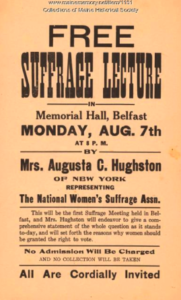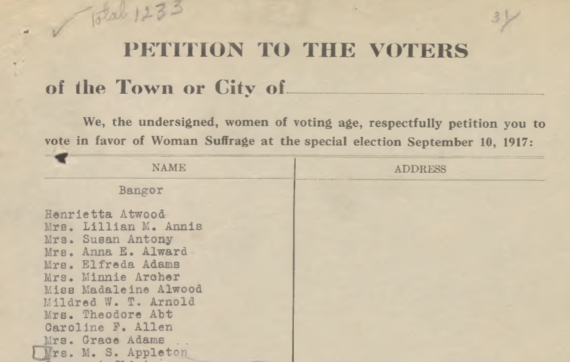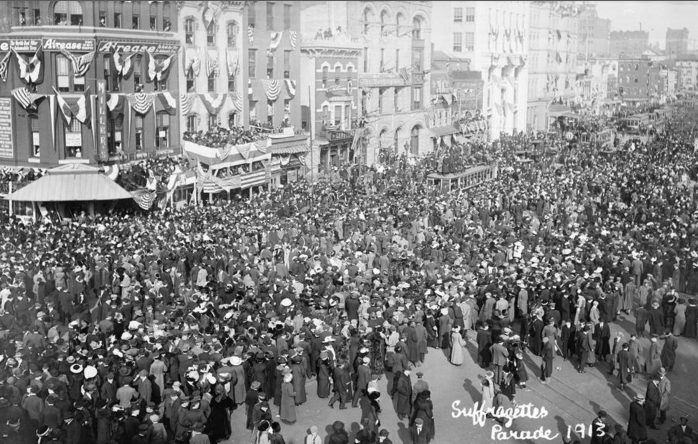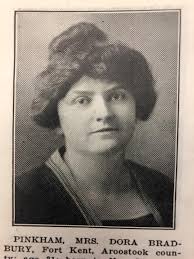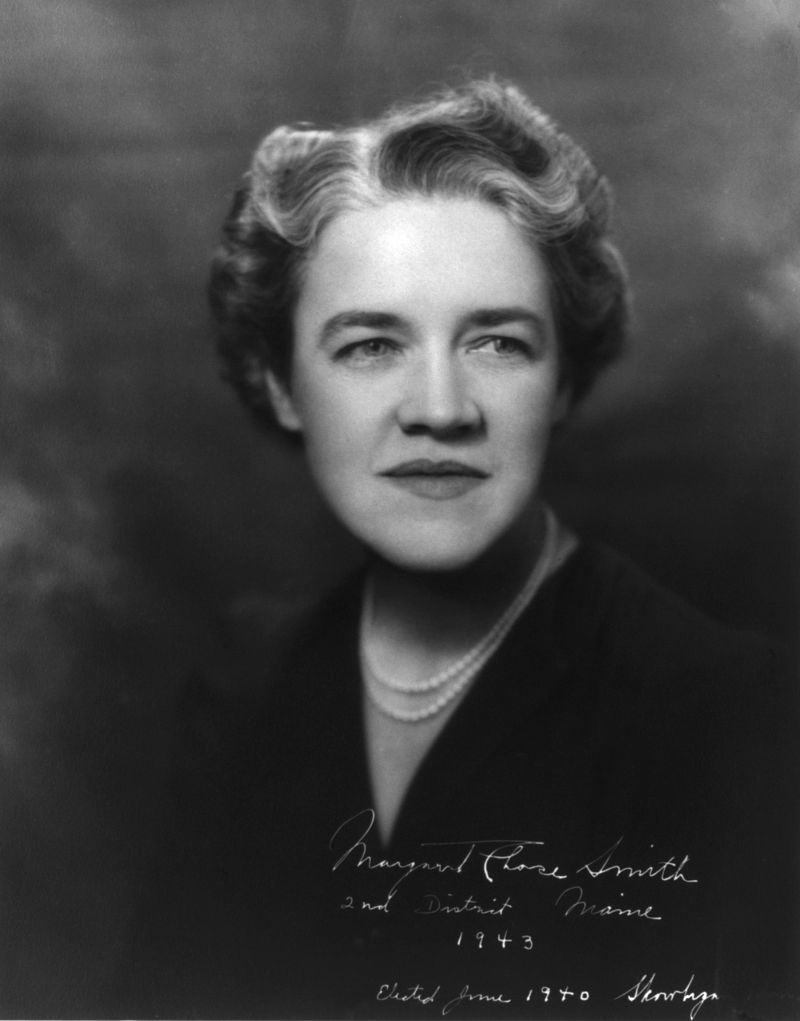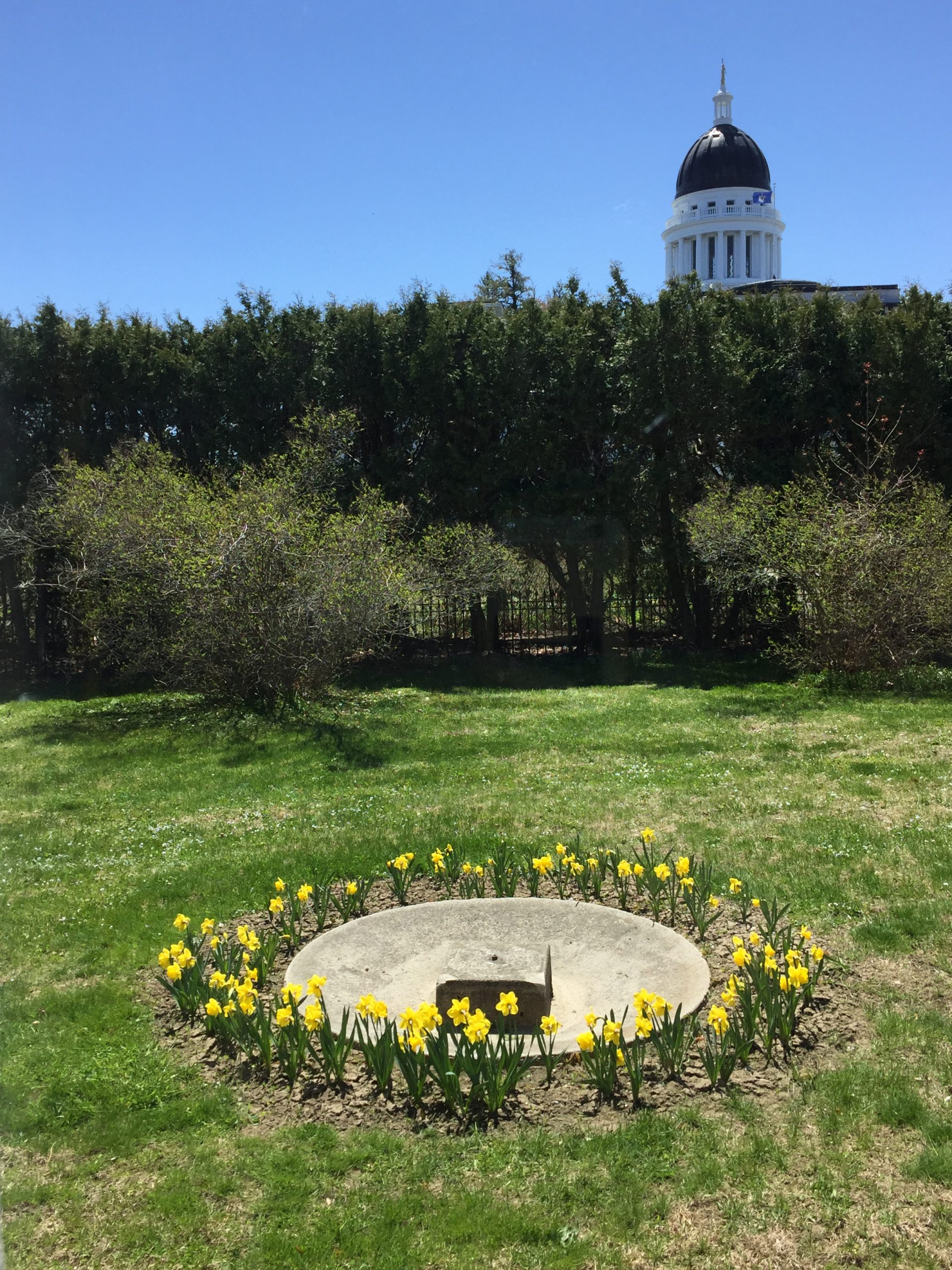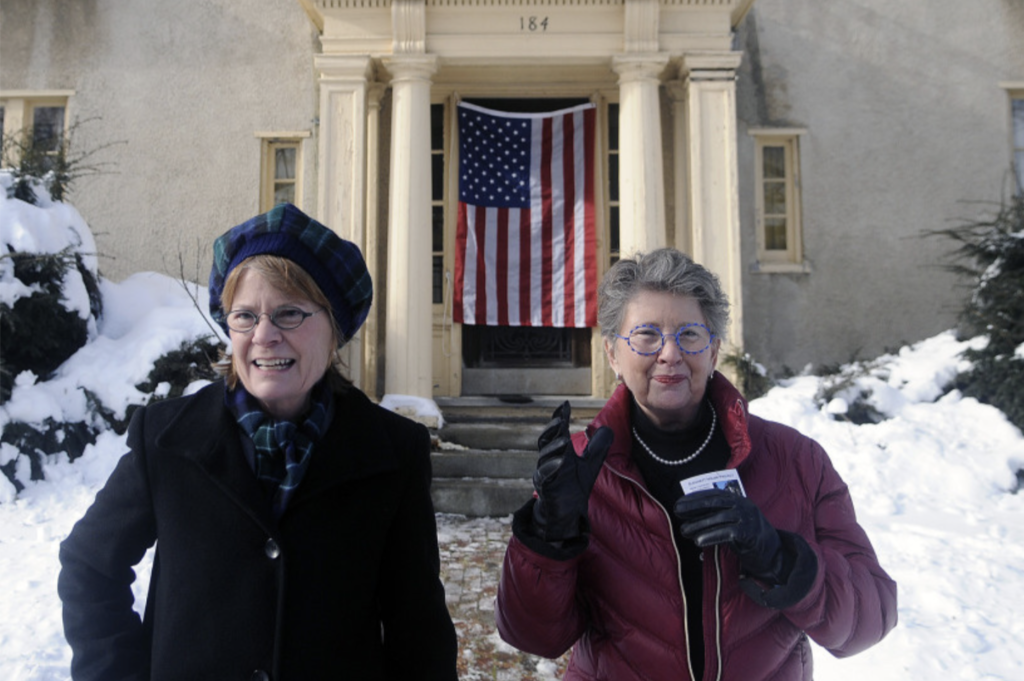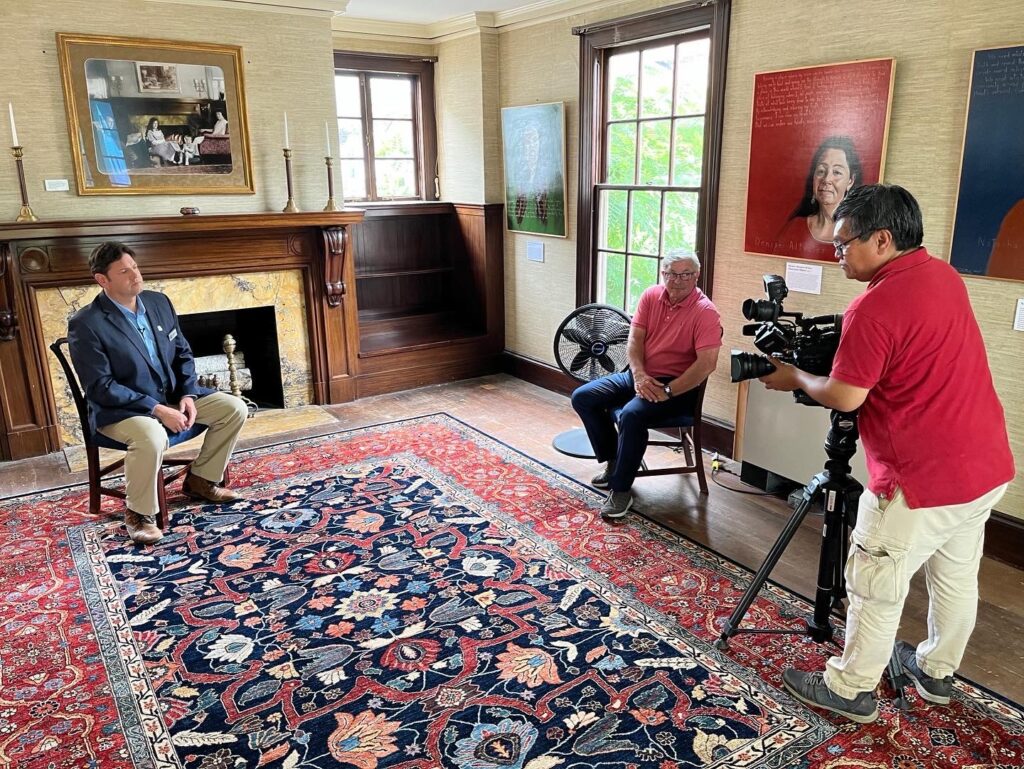
On July 31, 2022, the First Amendment Museum was featured in Total Maine with Steve Minich on WMTW channel 8.
Transcription:
Steve Minich: How well do you know the First Amendment? Well, according to the executive director of the new First Amendment Museum a recent poll shows that only 29% of Americans in that poll could name even one of the five freedoms guaranteed in the First Amendment.
Steve Minich: The museum is located right next to the Blaine House on state street Augusta in a very relevant setting.
Maxwell Nosbisch: So this is the historic 1911 Gannett House, which was the home of Guy and Anne Gannett.
Steve Minich: It’s so very fitting, they tell, that this house is now home to the First Amendment museum. Its creation, in fact, was first envisioned by family descendants to honor the Gannetts’ legacies, both so closely tied to the First Amendment rights.
Maxwell Nosbisch: You couldn’t pick a better first Amendment, two better first amendment people. Guy was a newspaper owner, a media guy. Anne Gannett was a suffragist.
Maxwell Nosbisch: So this is the old parlor, and right up here we got the First Amendment on the wall.
Steve Minich: Open for public tours, the narrative centers around the First Amendment’s forty-five words and its five guaranteed rights: freedom of religion, speech, the press, the right to assemble, and petition government.
Maxwell Nosbisch: Most museums, they cover tangible events or people that lived full lives and we’re talking about forty-five words.
Christian Cotz: We’re not about a bunch of old stuff behind glass. We’re a concept museum. We’re about inspiring people to get out and use their First Amendment freedoms in whatever way seems best to them.
Steve Minich: Christian Cotz is executive director.
Steve Minich: While the museum does include an array of displays and historical artifacts, their more so, he says, to encourage nonpartisan conversation. The more people talk about the First Amendment, the better handle they will have on the role it plays in their own lives.
Christian Cotz: It’s frightening how many people have no idea about what’s in the First Amendment.
Maxwell Nosbisch: If we can, you know, bring people a clearer understanding of the first amendment and what it enables then I would consider that a job well done no matter what political camp you come from.
Steve Minich: The museum remains a work in progress, renovating the building, installing more interpretive exhibits. Still, it’s not so much what visitors might see here, but what they grasp.
Christian Cotz: These five active freedoms that make up the first amendment are how we make our world a better place. And, it’s how we engage in our democracy as citizens.
The museum is located right next to the Blaine House in Augusta. It is open from 10 until 4, Monday through Saturday.


